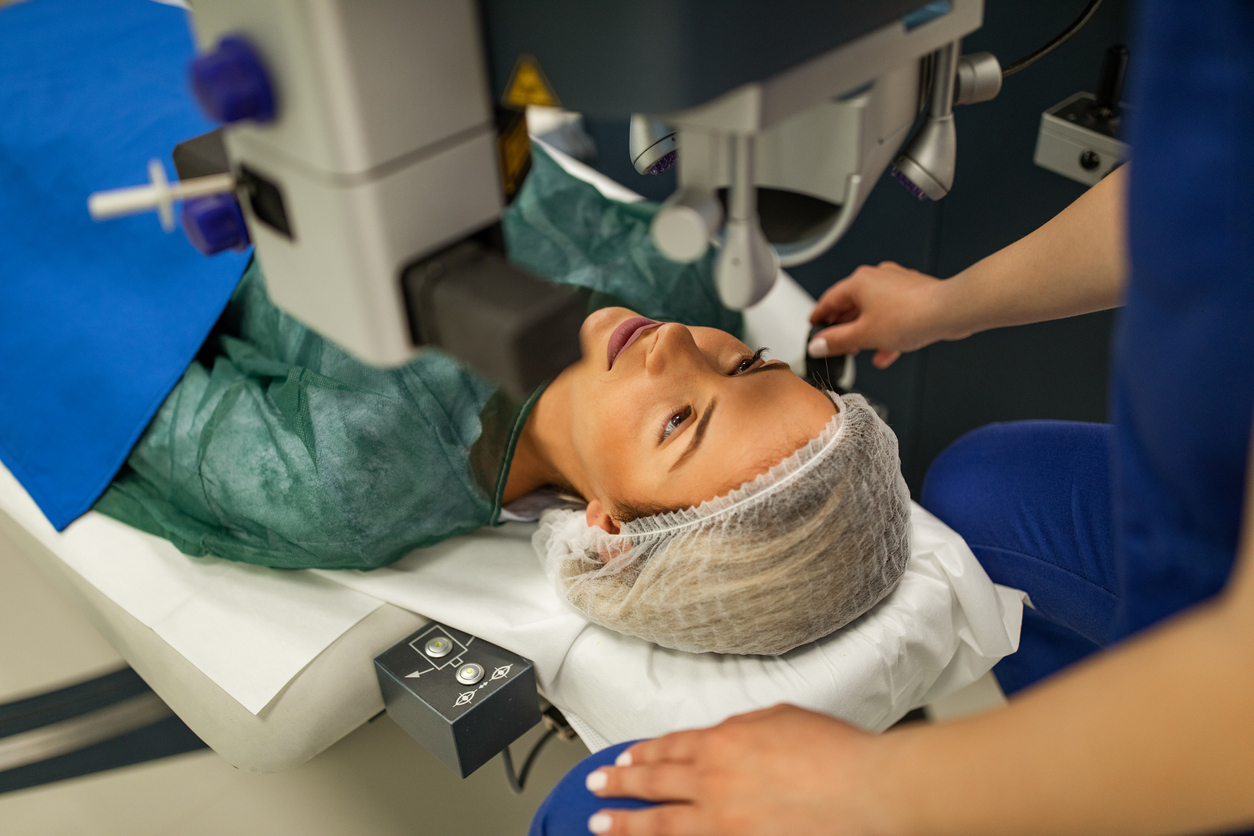What Are the Side Effects of LASIK?

Minor side effects may occur after LASIK eye surgery, but they typically fade in a matter of weeks.
For more than 20 years, LASIK vision correction surgery has been performed safely in the United States, with an average patient satisfaction rate of 95 percent. Once your eyes heal, you can expect your vision to be clearer and sharper than it was before the procedure.
If you’re considering LASIK, you’re likely wondering if there’ll be any side effects. As with any surgical procedure, you may experience some minor after-effects, but these symptoms are generally temporary and diminish as your vision stabilizes.
What Is LASIK?
Before your surgery, your eyecare specialist will review your complete health history. Persistent dry eye, autoimmune disorders like rheumatoid arthritis, or eye diseases like glaucoma may disqualify you from LASIK.
Next, your doctor will scan your cornea to determine its shape and whether LASIK can improve your vision. People with thin corneas are generally not good candidates for LASIK, for example. They can, however, qualify for other vision correction procedures like Clear Lens Exchange (CLE).
The goal of LASIK is to correct refractive errors of the cornea, the clear tissue curved around the front of the eye. A properly shaped cornea allows light to pass through to the retina. When the corneal surface is irregular, however, light bends on its way to the retina, causing problems like nearsightedness, farsightedness, and astigmatism.
Common Side Effects
Reshaping the cornea with LASIK can repair refractive errors and improve your eyesight. However, some patients may experience side effects after the surgery, such as:
Dry Eye. A temporary reduction in tear production is common after LASIK. If you experience dry eye, your doctor will prescribe lubricating eye drops to relieve irritation.
Changing Vision. Expect your vision to be blurry immediately following the surgery. Your eyes might also be extra sensitive to light, or you’ll experience brief bouts of double vision. Again, these after-effects are temporary and generally clear up within three to six months.
Difficulty Driving at Night. After LASIK, you may see halos, glare, and “starbursts” around lights. After a few days or weeks, you should be able to see clearly at night or in low light environments.
Infection. During the procedure, the eye surgeon cuts a thin flap on the surface of the cornea in order to reshape it. Afterwards, the flap is sealed over the cornea where it naturally bonds with the corneal tissue. In rare instances, the flap doesn’t reattach to the cornea, which can lead to an infection or teary eyes. To minimize the chance of infection, your doctor will prescribe special eye drops.
In the vast majority of LASIK cases, your eyesight will improve to at least 20/25, and most patients don’t need eyeglasses or contact lenses after the surgery. It takes about six months for your vision to stabilize fully, but if at that point you believe your vision isn’t improving, your doctor can perform an enhancement surgery to further refine your eyesight.
Let’s Talk About LASIK
At ICON Eye Care, our specialists can discuss vision correction options with you, and advise you on common after-effects and follow-up treatments. If you’re ready to experience the world without glasses or contacts, contact us today to set up an appointment.
[DISPLAY_ULTIMATE_SOCIAL_ICONS]








